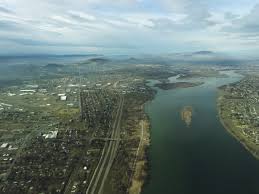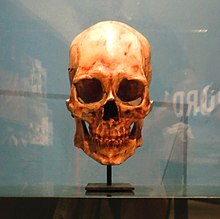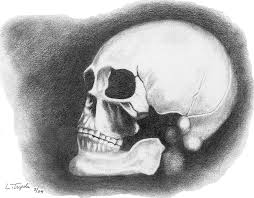
Kennewick Aerial

Kennewick Aerial
On a summer day in 1996, two college students, Will Thomas and David Deacy, went to the bank of the Columbia River in Kennewick, Washington, to watch a hydroplane race. As they were wading in the river, their foot hit something very hard on the river floor. When they picked it up, it was a human skull. After the race, they took it to a police officer who promptly ordered tests to see how old the skeleton was. After some searching around the area, almost the entire skeleton was found. Kennewick Man was unearthed.
"'It's the chafe between science and spirituality,' writes Kevin Taylor at Indian Country Today, 'between people who say the remains have so much to tell us about the ancient human past that they should remain available for research, versus people who feel a kinship with the ancient bones and say they should be reburied to show proper reverence for the dead.'"
NPR
According to carbon dating analysis, Kennewick Man is over 9,000 years old. After this was discovered, many tribes simultaneously filed NAGPRA claims for the remains they called The Ancient One. However, archeologists claimed they could not know if the skeleton was close to any modern Native American tribes. If there was no evidence of cultural affiliation, then no tribe could legally request a NAGPRA claim and be granted repatriation.

Natural History Museum

Natural History Museum
Finally, in September 2016, DNA evidence definitively connecting The Ancient One with modern Native American tribes helped make the successful case for Kennewick Man's reburial. Legislation was passed that returned the remains of Kennewick Man to the Columbia Basin tribes. Finally, with the help of NAGPRA, Kennewick Man was returned to peaceful repatriation and reburial with the Native American Tribes, giving closure and peace to the Native American people.
“I think that the more recent generations and people working today – because you can tell I'm not a recent generation – but that working with Native people has actually enhanced, you know, what we've learned. And it becomes this collaborative exchange back and forth.”
-Deloria and Calloway